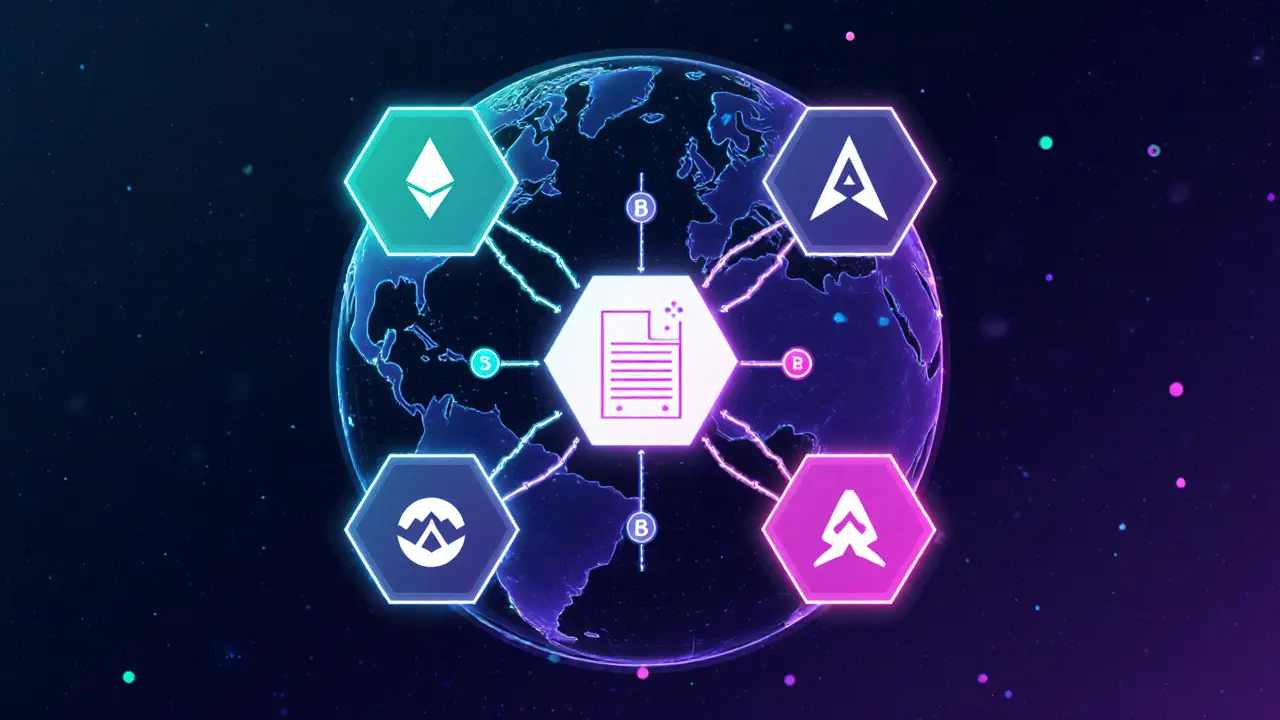DeFi Interoperability Explained
When working with DeFi interoperability, the ability of decentralized finance protocols to function across multiple blockchains. Also known as cross‑chain DeFi, it unlocks new trading routes, reduces friction, and expands market depth.
Imagine a cross‑chain bridge, a smart‑contract gateway that locks assets on one chain and mints equivalents on another. That bridge is the engine behind DeFi interoperability – it moves value, lets users swap Bitcoin on Ethereum, and powers new liquidity pools. DeFi interoperability therefore depends on reliable bridges, robust token standards, and open APIs.
Why Interoperability Matters
A decentralized exchange, a platform where users trade assets directly from their wallets without a central order book can only thrive when it accesses enough liquidity. Interoperability feeds that liquidity by linking separate ecosystems, turning isolated markets into a single, deep order book. At the same time, liquidity aggregation, the process of pooling funds from many sources to offer better prices becomes possible only when assets can flow freely across chains.
These connections create clear semantic triples: DeFi interoperability enables cross‑chain bridges; cross‑chain bridges require secure smart contracts; secure smart contracts support decentralized exchanges. The chain reaction improves price stability, lowers slippage, and opens up arbitrage opportunities for hobby traders and institutions alike.
One real‑world example is the Ren protocol. Ren (REN) operates a network of “Darknodes” that facilitate trustless cross‑chain transfers. By providing a generic bridge layer, Ren lets any DeFi app move assets between Ethereum, Binance Smart Chain, and others without custody. This shows how a single bridge can become the backbone for dozens of DEXs, liquidity aggregators, and yield farms.
Another key player is Orderly Network, which focuses on cross‑chain liquidity. Orderly aggregates order flow from multiple DEXs, then redistributes it across bridges to ensure the best possible execution. The result is a smoother experience for users who don't need to manually hop between chains.
From a developer’s perspective, building interoperable DeFi apps means embracing standards like ERC‑20, BEP‑20, and the emerging Inter‑Blockchain Communication (IBC) protocol. These standards act as the common language that bridges translate, making token swaps, lending, and staking possible across diverse chains.
Regulators are also watching this space. While bridges open doors, they also raise questions about AML compliance and asset tracing. Projects that embed on‑chain identity checks or use audited bridge contracts tend to gain more trust from exchanges and institutional investors.
All of this sets the stage for the articles below. You’ll find step‑by‑step guides on licensing, deep dives into specific tokens like Ren, reviews of DEXs that rely on cross‑chain tech, and practical tips for building or using interoperable DeFi solutions. Dive in to see how each piece fits into the larger puzzle of a truly connected financial ecosystem.

Cross-Chain DeFi Applications: How Interoperable Finance Works
Jul 25, 2025, Posted by Ronan Caverly
Explore how cross-chain DeFi apps connect multiple blockchains, the tech behind bridges, benefits, security challenges, and future trends shaping interoperable finance in 2025.
MORESEARCH HERE
Categories
TAGS
- decentralized exchange
- crypto exchange review
- cryptocurrency
- crypto coin
- CoinMarketCap airdrop
- smart contracts
- tokenomics
- cryptocurrency exchange safety
- crypto exchange
- cryptocurrency airdrop
- crypto airdrop
- cryptocurrency exchange
- crypto airdrop guide
- blockchain token distribution
- DeFi
- crypto exchange scam
- crypto airdrop 2025
- Ethereum
- cross-chain interoperability
- ERC-20
